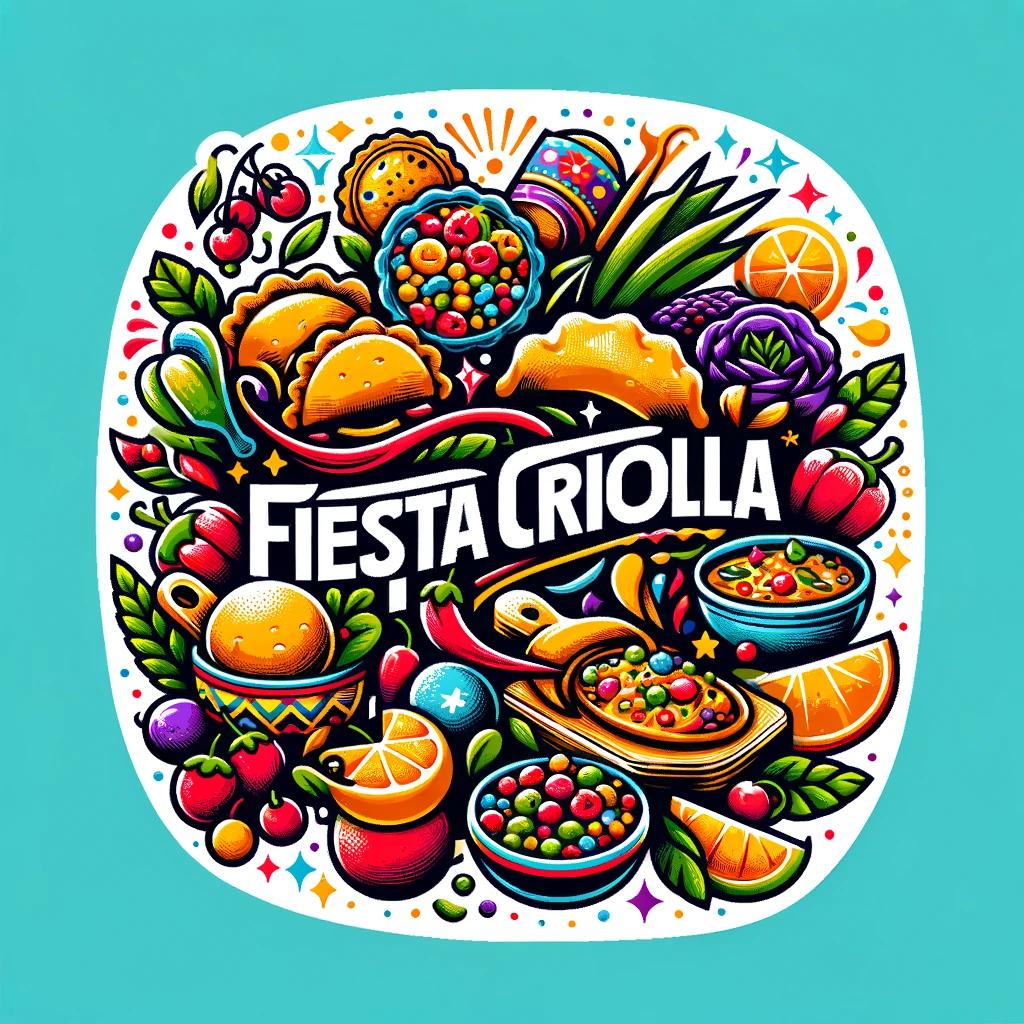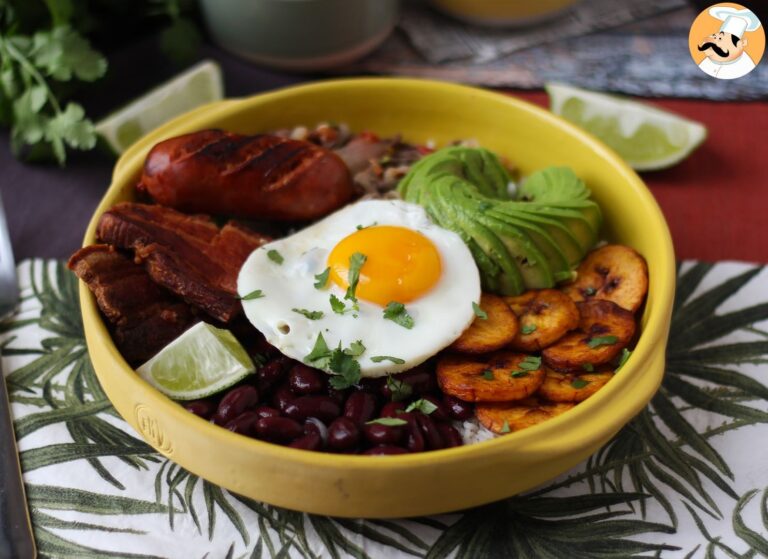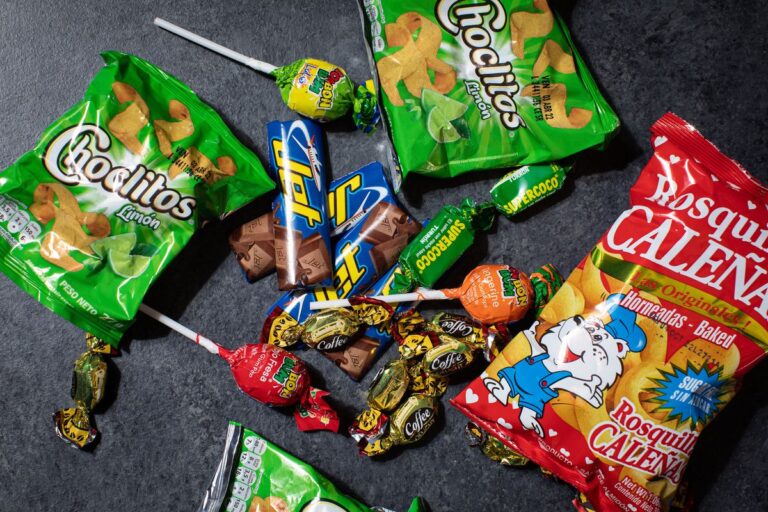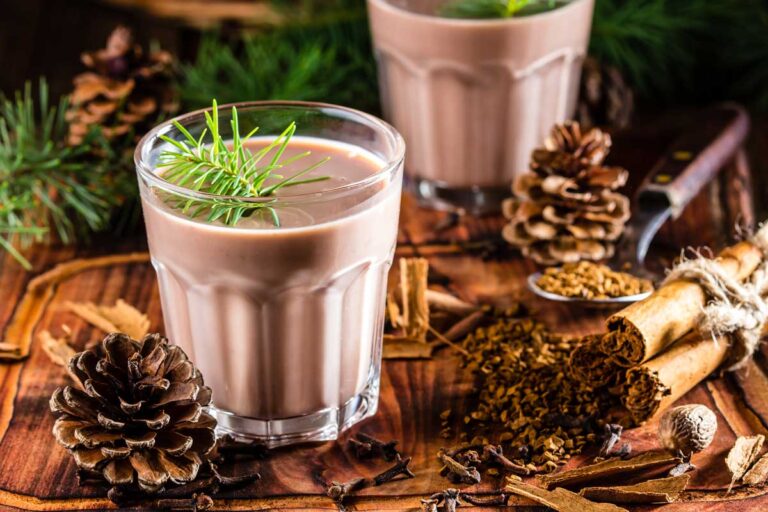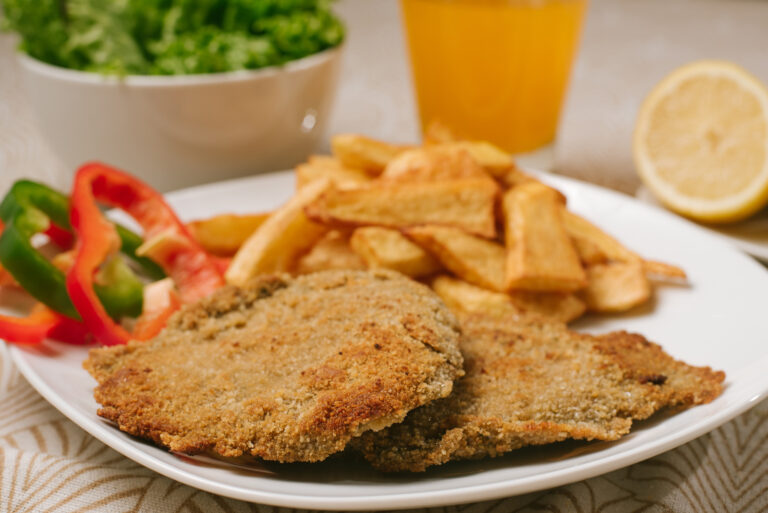Have you ever taken a bite and wondered, “What’s the story behind this?” Well, hold onto your forks, because we’re diving into the delicious world of Chilean cuisine. This isn’t just about recipes passed down through generations; it’s about a rich tapestry of history, culture, and yes, absolutely mouth-watering dishes that tell the Chilean food history itself.
From the indigenous staples to the Spanish influence and beyond, each meal is a chapter in a much larger tale. Ready to explore how Chile’s history shaped its plates? Let’s get tasting and unravel these flavorful mysteries together!
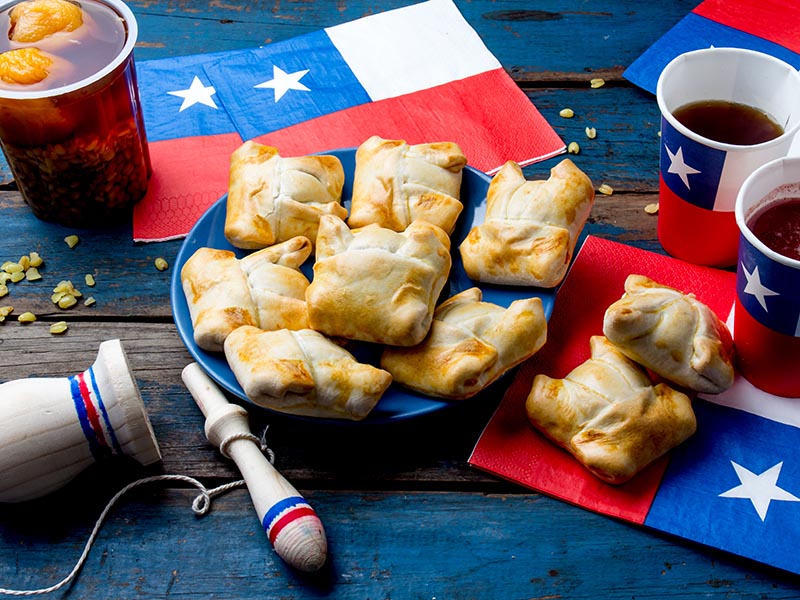
Origins of Chilean Cuisine
Ever wondered where Chilean cuisine got its kick? It’s a smorgasbord of influences that started way before global fusion was a thing. Imagine this: the indigenous Mapuche people, with their rich tradition of corn, potatoes, and beans, laying down the culinary bedrock. Then, picture the Spanish rolling in during the 16th century, tossing olives, wine, and meats into the mix.
But it doesn’t stop there! Add a pinch of German immigrants baking up a storm, and a sprinkle of Italian and Middle Eastern flavors, and you’ve got yourself a unique, eclectic feast that’s all Chilean. This fusion isn’t just food; it’s centuries of history on a plate.
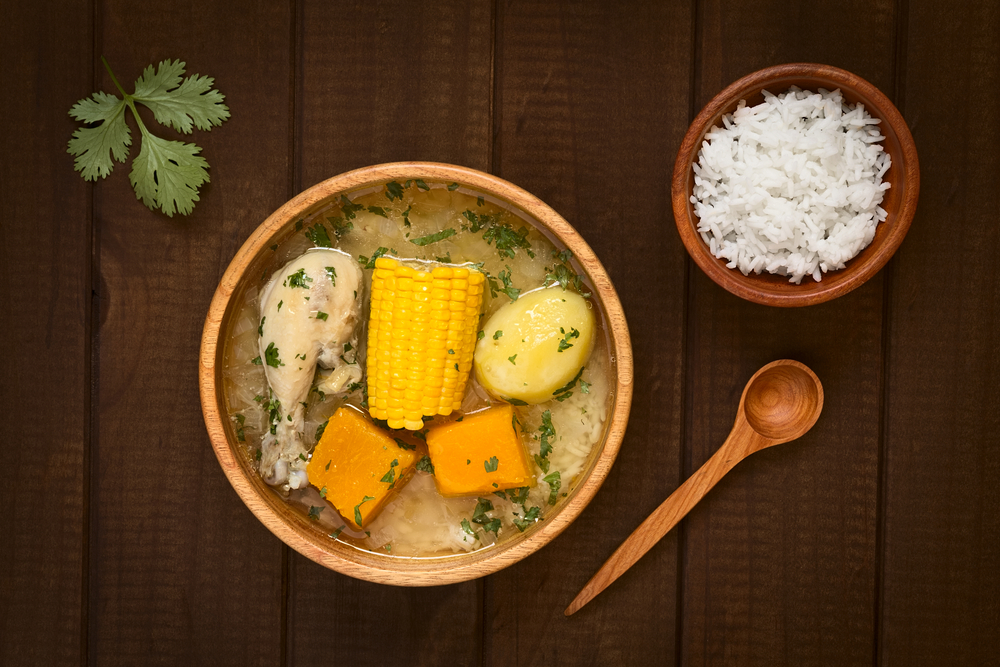
The History of Chilean Cuisine
Chilean cuisine? It’s like a culinary time machine. Let’s start way back with the indigenous groups, especially the Mapuche, who were the OGs of Chilean food. They rocked the native ingredients like quinoa, maize, and potatoes—stuff that’s still crucial in Chilean dishes today. Then the plot thickens with the Spanish arrival in the 1500s, who brought over olives, wheat, and livestock, forever changing the menu.

As the centuries rolled on, waves of European immigrants from Germany, Italy, and Croatia added their own twists, from hearty stews to delicate pastries. And let’s not forget the Middle Eastern influence that snuck in there, giving a little extra spice to the mix.
This blend of traditions and ingredients has simmered over time to create a cuisine that’s uniquely Chilean, telling the story of its diverse cultural heritage through every dish. Whether it’s a comforting bowl of cazuela or a vibrant plate of empanadas, each bite is a piece of history.
What Inspired Chilean Cuisine
What’s cooking in Chile? A whole lot of inspiration, that’s what! Chilean cuisine is like a culinary quilt stitched together from local traditions and a mishmash of immigrant influences. First off, the native Mapuche laid down some solid roots with their use of indigenous plants and techniques. They taught us the magic of corn, potatoes, and the all-mighty merkén (smoked chili pepper).
Then the Spanish conquistadors galloped in, bringing with them olives, almonds, and vineyards, and not to mention a whole new set of cooking methods. But the plot thickened as German, Italian, and French immigrants arrived, each adding their own signature flavors—from sausages and cakes to pastas and pastries.
And the inspiration didn’t stop there; the vibrant ports of Valparaíso and Antofagasta became melting pots of global flavors, incorporating bits from British tea to Arabic spices. This international potluck, combined with Chile’s diverse climates and landscapes—from the ocean’s bounty to the lush valleys—gave Chilean cuisine its eclectic and irresistible character. It’s a testament to Chile’s open arms and culinary curiosity, blending the old with the new and the local with the global.

The Geography of Chile
Chile is a stunning ribbon of land, stretching over 4,300 kilometers (about 2,670 miles) from north to south but only averaging 177 kilometers (about 110 miles) east to west. Picture this: the world’s driest desert, the Atacama, in the north, where rainfall is as rare as a boring meal. Then, cruise down the map to the lush central valley, which is the heartland of Chilean agriculture—vibrant vineyards and bountiful orchards as far as the eye can see.
Keep going and you’ll hit the Lake District with its storybook landscapes—volcanic peaks and deep blue lakes. Further south, it’s the gateway to Patagonia, a rugged, awe-inspiring region where the Andes meet the Southern Ice Fields. And let’s not forget Chile’s Pacific coast, home to bustling ports and serene beaches that influence local diets with a heavy dose of seafood.
This dramatic range of climates and landscapes not only makes Chile a traveler’s paradise but also a diverse pantry of natural resources, shaping its food, culture, and way of life. From desert-born wines to glacier-fed lamb, the geography of Chile is a central character in its culinary story.

Traditional Food of Chile
Chile’s traditional foods are as diverse as its landscapes, each with a backstory as rich as its flavors. Here’s a tour of some Chilean classics and the tales behind them:
Empanadas de Pino: The iconic Chilean empanada is a hearty pastry filled with a mixture of minced meat, onions, olives, and boiled eggs. The “pino” filling traces back to the Mapuche’s use of ground corn and later influenced by Spanish culinary styles, evolving into the meaty version enjoyed today.

Pastel de Choclo: This is a corn pie that’s like a symphony of native corn topped with layers of ground meat, chicken, raisins, and black olives, baked under a sweet corn crust. It reflects the agricultural practices introduced by the indigenous people and later adapted to include livestock and other ingredients brought by the Spanish.

Cazuela: This comforting stew is a beautiful mishmash of native potatoes, pumpkin, and corn with beef or chicken, cooked slowly until everything melds together perfectly. It embodies the fusion of pre-Hispanic and Spanish cooking techniques, providing a filling, nutritious meal that highlights local ingredients.
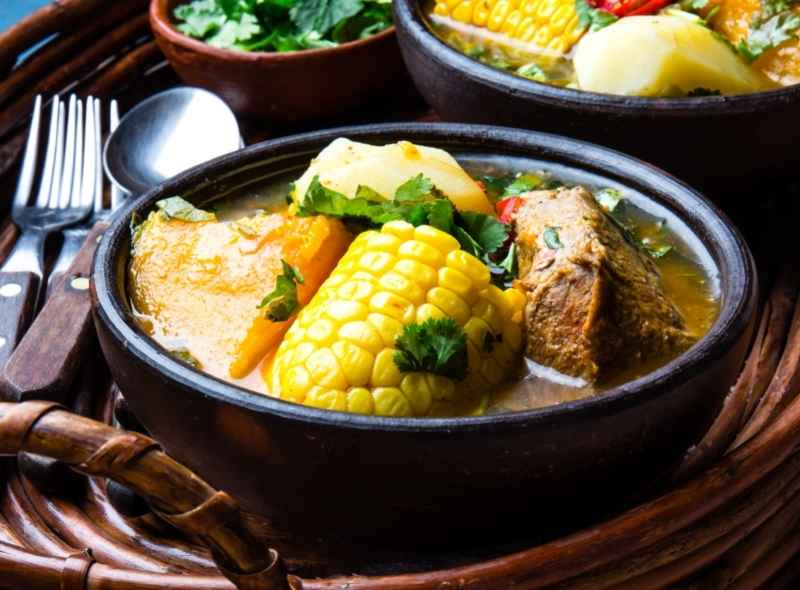
Curanto: Hailing from the Chiloé Archipelago, this traditional dish is made by cooking seafood, meat, potatoes, and chapaleles (dumplings) in a hole dug in the ground, heated with hot stones. It’s a method that dates back to the indigenous methods of cooking with earth ovens.
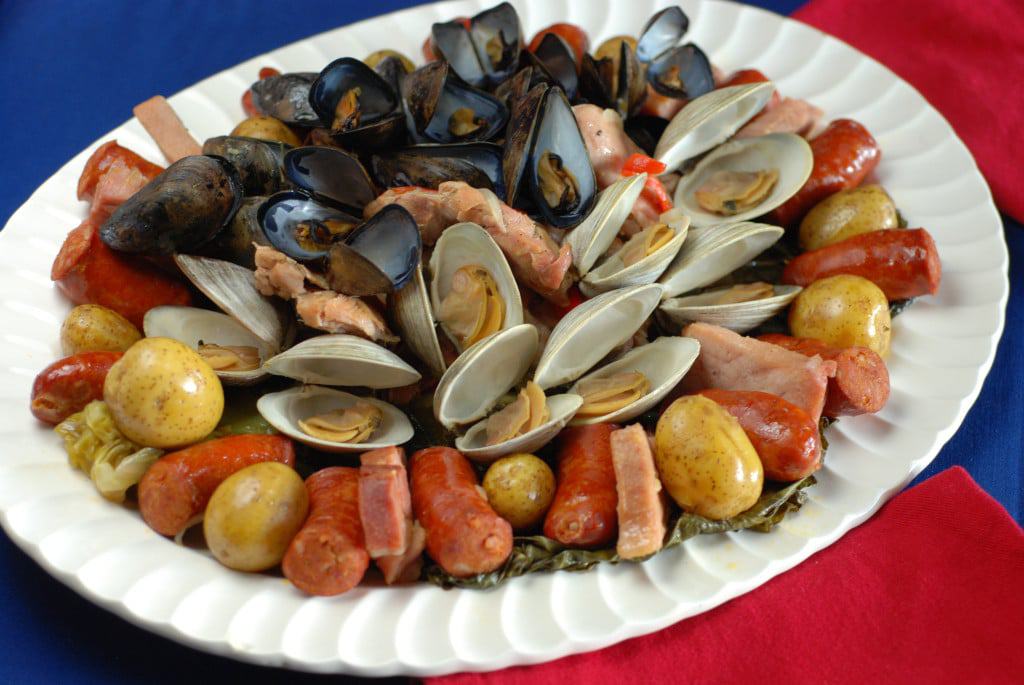
Chorrillana: A pile of French fries topped with chopped beef, sausages, onions, and sometimes eggs. It’s believed to have originated in Valparaíso as a filling, affordable meal for busy port workers, combining simple, readily available ingredients into a satisfying dish.
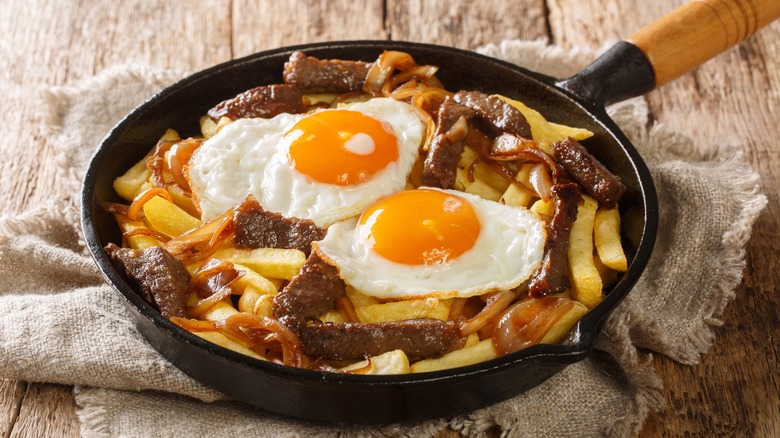
Pebre: A zesty condiment made with chopped cilantro, onions, garlic, chili peppers, and tomatoes, often served with bread as an appetizer. Pebre reflects the Chilean love for bold, fresh flavors and serves as a testament to the agricultural bounty of the country.
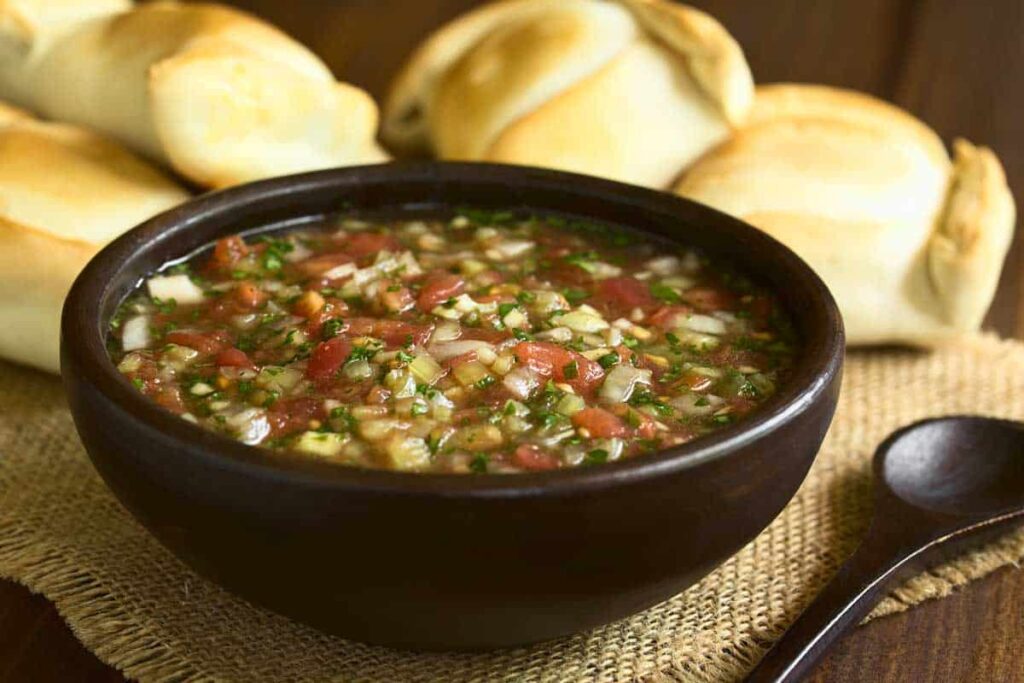
These dishes not only satisfy the appetite but also tell the story of Chile’s cultural and historical evolution, from indigenous practices to European influences, all served up on a single plate.
Religious and Customs of Chilean Cuisine
Chilean cuisine is deeply entwined with the country’s religious and cultural customs, painting a vivid picture of tradition and celebration through its dishes. Let’s explore how these elements stir into the culinary pot:
Fiestas Patrias (Independence Day Celebrations): During Chile’s Independence Day in September, the air is rich with the scent of asados (barbecues) as people gather to grill vast quantities of meat in a social, festive setting. This celebration is a nod to the communal gatherings of both indigenous groups and Spanish settlers.

Semana Santa (Holy Week): In this Catholic nation, Holy Week brings a focus on seafood due to the tradition of abstaining from red meat. Dishes like caldo de congrio (conger eel soup) are popular, rooted in Chile’s rich maritime resources and the Catholic culinary customs.
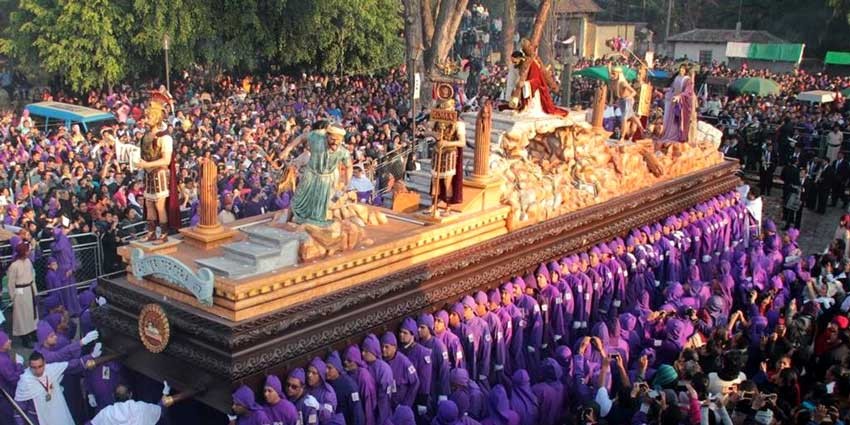
Cuasimodo: On the Sunday following Easter, Chileans celebrate Cuasimodo, where communities gather to distribute communion to the infirm. This day features a traditional feast, often including empanadas and asado, to feed the crowds in a festive, communal spirit reflective of both religious devotion and community solidarity.

Christmas: Similar to many Christian cultures, Christmas in Chile involves special dishes. One standout is Pan de Pascua, a holiday cake rich with spices, dried fruits, and nuts, akin to a European fruitcake but with a distinct Chilean twist. This is often accompanied by Cola de Mono, a spiced Christmas cocktail made with coffee, milk, sugar, cinnamon, and aguardiente or rum.

Day of the Dead: Although not as prominently celebrated as in some other Latin American countries, Chileans do mark the Day of the Dead with gatherings and special meals that honor deceased loved ones, incorporating traditional foods that were favorites of the departed.
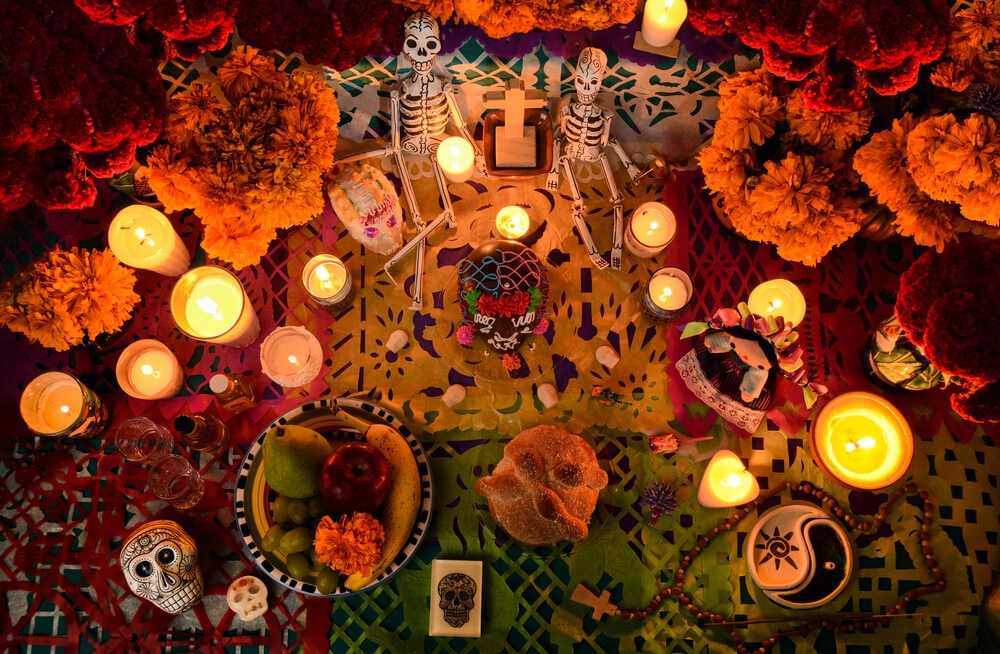
Harvest Festivals: Reflecting the agrarian society’s deep roots, harvest festivals are celebrated with much enthusiasm, especially in wine regions. These include the Vendimia festivals in March and April, which celebrate the grape harvest with wine tastings, grape stomping events, and local gastronomy showcases, highlighting the integral role of wine in Chilean cultural and religious life.
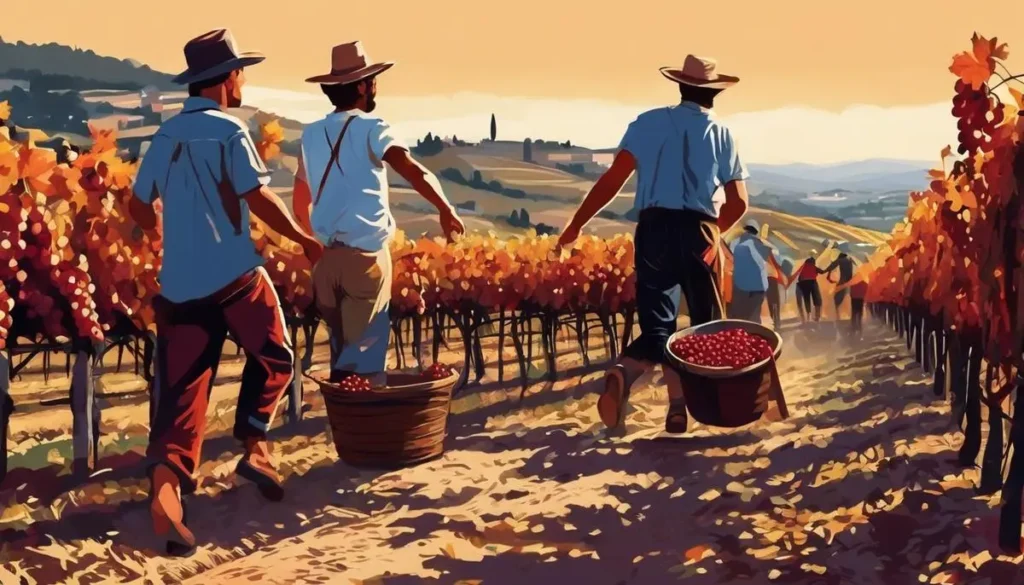
These customs and religious observances shape Chilean cuisine, making it a vibrant tapestry of history, spirituality, and community bonding. Each dish and drink is not just sustenance but a celebration of life’s cyclical nature and the joys of shared experiences.
Wrapping Up
Chilean cuisine is a vibrant tapestry woven from the threads of its diverse geography, rich history, and dynamic cultural exchanges. Each dish tells a story, whether it’s the communal empanadas shared during national celebrations or the comforting cazuela that brings warmth to any family dinner.
This culinary tradition is not just about nourishment; it’s about experiencing a culture that has mastered the art of blending indigenous and foreign influences into something uniquely and deliciously Chilean.
So, why not take your taste buds on an adventure? Try whipping up some traditional Chilean recipes at home. It’s a delightful way to explore the richness of Chilean culture and maybe even start some new traditions of your own.
Disclosure: Our blog contains affiliate links to products. We may receive a commission for purchases made through these links. However, this does not impact our reviews and comparisons. We try our best to keep things fair and balanced, in order to help you make the best choice for you.
